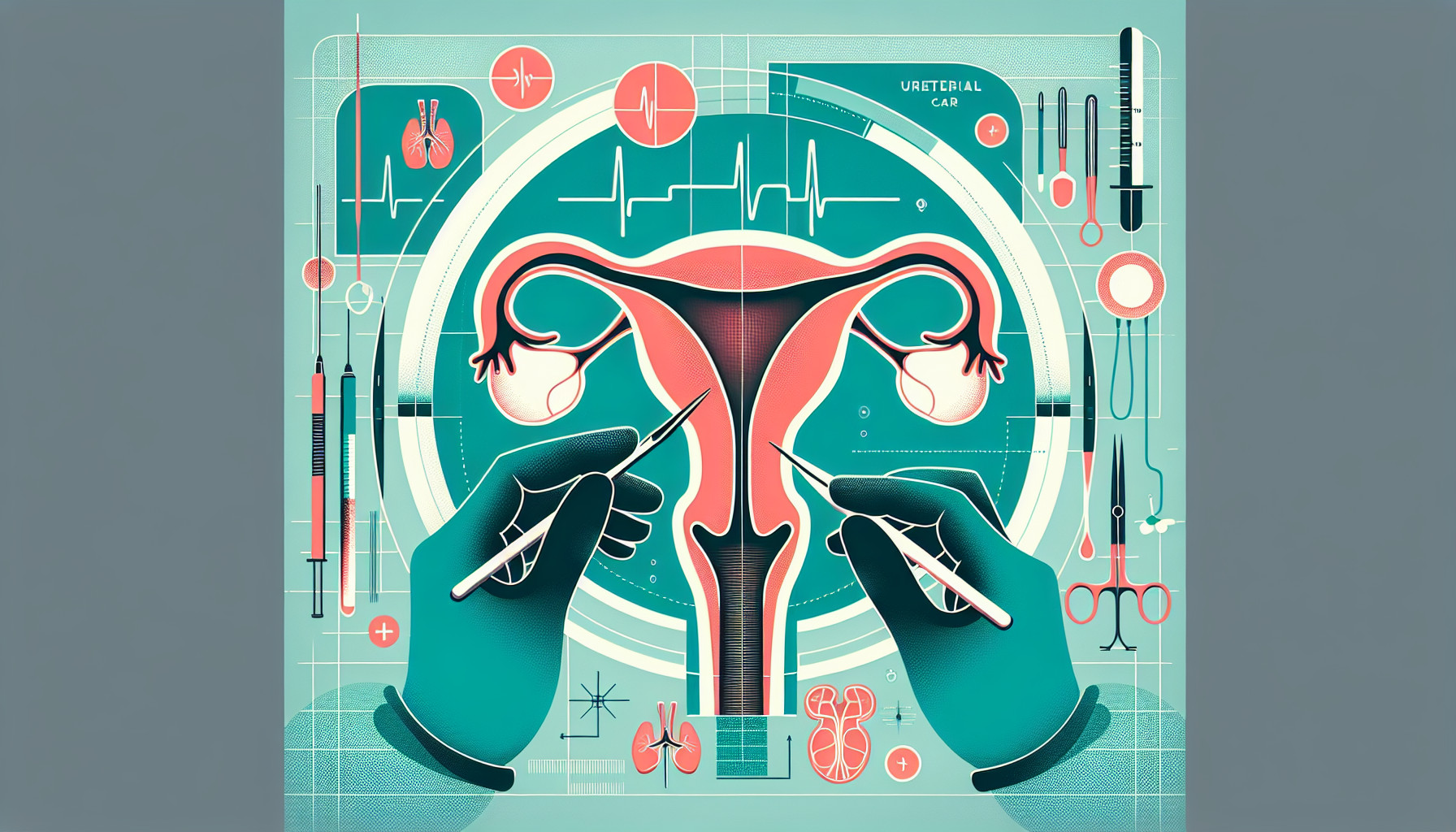Our Summary
A 70-year-old man with rectal cancer had surgery to remove the tumor after undergoing cancer treatment with drugs and radiotherapy. After the surgery, doctors noticed that a lot of fluid was draining from his body - about 800 milliliters on the second day after his operation. Tests showed high levels of a waste product called creatinine in this fluid, which suggested that he had a kidney injury.
Further scans confirmed that the left ureter, the tube that carries urine from the kidney to the bladder, was damaged. This was also causing a build up of urine outside of the bladder, a condition known as urinoma. After consulting with a urologist, a specialist in urinary problems, the patient had another surgery to fix the injury to his ureter.
FAQs
- What is ureteral reimplantation and when is it needed?
- What symptoms led to the discovery of the patient’s left ureteric injury in this case?
- How was the patient’s ureteric injury diagnosed and treated?
Doctor’s Tip
A doctor might advise the patient undergoing ureteral reimplantation to follow a strict post-operative care plan, which may include:
- Taking prescribed pain medications as directed to manage discomfort
- Drinking plenty of water to stay hydrated and help flush out any remaining urine or blood in the urinary tract
- Avoiding strenuous activities or heavy lifting for a certain period of time to allow the surgical site to heal properly
- Keeping the incision site clean and dry to prevent infection
- Following up with the urologist for regular check-ups and monitoring of kidney function
- Reporting any unusual symptoms, such as fever, increased pain, or difficulty urinating, to the doctor immediately.
Suitable For
Patients who may be recommended for ureteral reimplantation typically include those with ureteric injury, ureteral strictures, ureteral obstruction, vesicoureteral reflux, recurrent urinary tract infections, and other conditions affecting the ureter. In this case, the patient had a ureteric injury as a complication of laparoscopic surgery for rectal adenocarcinoma, leading to the recommendation for ureteral reimplantation.
Timeline
Before ureteral reimplantation:
- Patient undergoes laparoscopic low anterior resection for rectal adenocarcinoma
- Postoperatively, patient experiences high drain volume output with clear serous fluid
- Drain creatinine returns as 300 mmol/L, serum creatinine is 100 mmol/L
- CT scan confirms left ureteric injury with associated urinoma
After ureteral reimplantation:
- Patient undergoes left ureteric reimplantation emergently
- Recovery period following surgery
- Monitoring of drain output and renal function
- Follow-up appointments with urology team for postoperative care and management.
What to Ask Your Doctor
- What is ureteral reimplantation and why is it necessary in my case?
- What are the risks and potential complications associated with ureteral reimplantation surgery?
- What is the success rate of ureteral reimplantation in treating ureteric injuries like mine?
- What is the recovery process like after ureteral reimplantation surgery?
- Will I need any additional treatments or follow-up care after the surgery?
- Are there any lifestyle changes or precautions I should take after the surgery to prevent future ureteric injuries?
- How long will it take for me to fully recover and return to normal activities after ureteral reimplantation surgery?
Reference
Authors: Zhao Y, Tan WJ. Journal: Dis Colon Rectum. 2023 Nov 1;66(11):1421-1424. doi: 10.1097/DCR.0000000000003032. Epub 2023 Aug 15. PMID: 37594904
